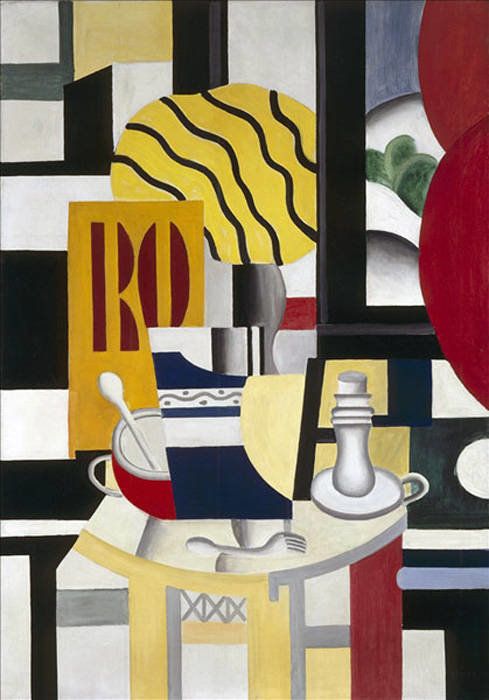
If you haven't been to the Getty Villa in awhile, now is the time to plan a quick trip there... before January 16th, when the current extraordinary exhibition will be leaving. The Getty Villa, part of the J. Paul Getty Museum, is at 17985 Pacific Coast Highway, in Pacific Palisades on the border of Malibu, and is open from Wednesday through Monday, from 10 am to 5 pm. It is closed Tuesdays and on major holidays. Admission is free, but you do need a ticket, so call in advance or the day of your trip to (310) 440-73000. Parking is $10. I had not been there for several years, so when journalist Caroline Graham invited me to join her at the opening of the exhibition, Modern Antiquities, I snapped at the chance to see the renovated museum, based on an ancient Roman villa. They have extensively revamped the stunning setting to make it more visitor-friendly and enlarge the exhibition space. The current show is an exhibition of paintings and sculptures by four giants of the modern art world, Pablo Picassso, Fernand Leger, Giorgio de Chirico, and Francis Picabia. David Bomford, the acting director of the J. Paul Getty Museum, sat with Caroline and me for a cup of coffee and explained a bit about the show. "All four of these giants looked to classical antiquity to feed their imaginations, and yet they remained radical figures in twentieth century art." He went on to comment that these avant-garde artists wished to return to a lost past, the antiquity they saw primarily in musuems, which was for them a vital part of contemporary life. He explained that -- dating from the 1890s to the 1930s, the works by Picasso, de Chirico, Leger and Picabia featured here are displayed alongside ancient art from the Getty collection. "I think this Getty Villa, which is in itself a uniquely modern creation based upon a classical model, provides a hospitable environment for this juxtaposition." He finished his coffee and got up to go, with a parting note: "The exhibition, our first here for paintings, illuminates what these artists, European modernists, found arresting in ancient culture. As they have embraced and transformed antiquity, their work informs us how we now perceive classical art." I understood some of what he was imparting, but walked through the galleries to try and comprehend more.
The earliest modern works on display are drawings after ancient sculpture made by Picasso as a teenager in the 1890s, followed by works from 1906, when he turned to archaic Greek sculpture to help him reinvent the human figure, Between World War I and the mid-1930s, a rich mixture of ancient art -- Pompeian wall paintings, Greek vase paintings and classical sculptures -- opened up new directions in his work. I was stunned by some of the de Chirico paintings, which I did not previously know, his stark dream images which employ ancient fragments and types, was unique... at least to me. The works of the other two artists, Leger and Picabia, are a different kettle of fish entirely. Caroline exhibited her artistic knowledge by telling me that after his cubist period, Leger mechanized the antique (often in the form of large female nudes), thus making it modern and progressive. Picabia, following his involvement with the Dada movement (remember them?), ambiguously recycled well-known classical images in his "transparencies" of the late 1920s and early 30s, in which human, animal and plant forms are layered in superimposed outlines. This show reunites three of these panels for the first time in some 80 years.
Altogether there are about fifty modern paintings and works on paper, as well as two bronze sculptures. The more than a dozen ancient objects include Greek and Roman sculptures, vases, a mummy portrait and an Etruscian mirror. I met the curator of the Museum Picasso Antibes, who was here this evening, and he told me that the exhibition will next be in his museum from mid-February to mid-May. I am emailing my brother, Stan, who lives near there, to make sure he sees the show when it opens. But now is the time for you to make the quick trip to the shores of Malibu for an uplifting visual experience. My favorite of many pieces I saw? The stunning larger-than-life head of Marie-Therese Walter, Picasso's muse and mistress of many years, and mother of his daughter, whom he met in 1927 outside of a Parisienne department store when she was seventeen and he was forty-five. It speaks to me. (His painting of her, Nude, Green Leaves and Bust, sold for a record $106.5 million at Christie's last year. It had belonged to the late L.A. art collector, Frances Brody.)
To subscribe to Jay Weston's Restaurant Newsletter ($70 for twelve monthly issues), email him at jayweston@sbcglobal.net